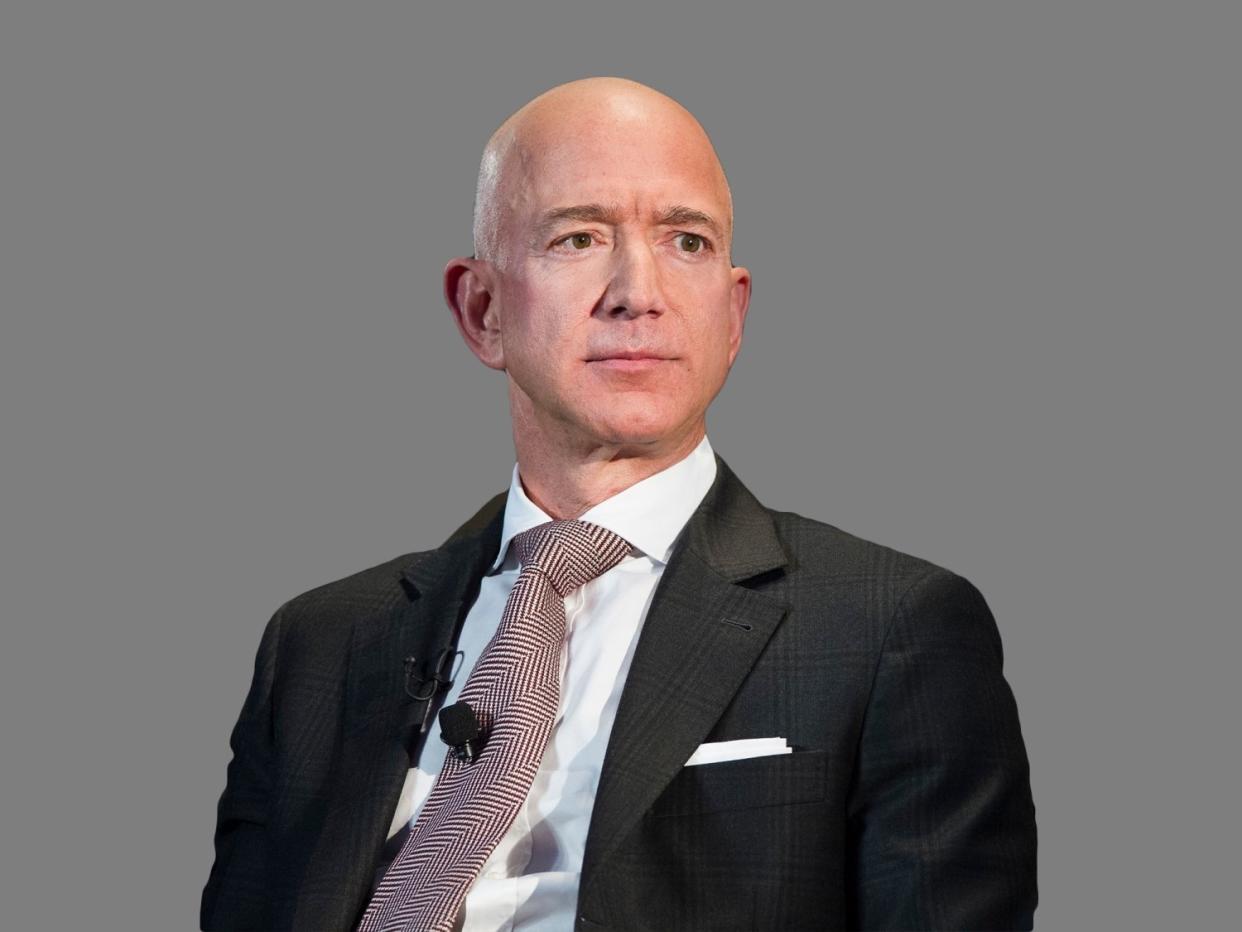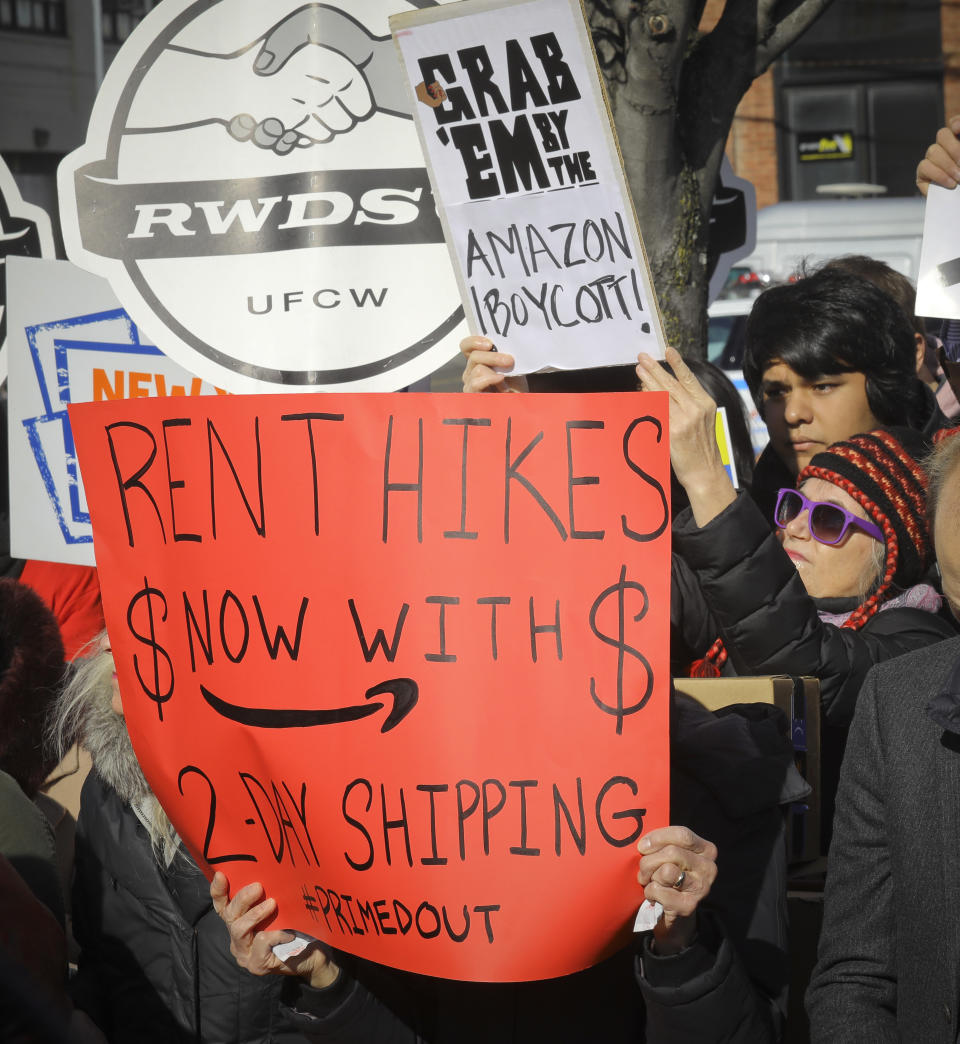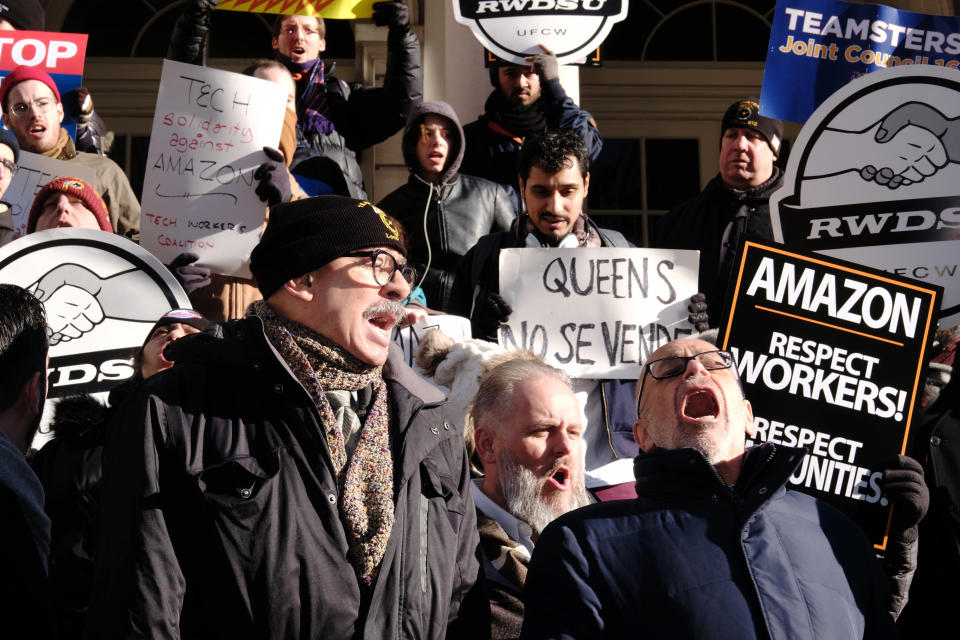Amazon's HQ2 was a showdown between a union city and a tech giant

Amazon gave up its Big Apple dreams on Thursday—even though a poll released two days earlier showed a majority of city and state residents supported the plan for a headquarters in Long Island City, Queens.
The incongruity left many scratching their heads, but the cause is clear: a months-long opposition campaign that pressured the tech giant to make concessions or leave.
The outcome shows the strength of labor unions, which represent a greater proportion of workers in New York than any other state in the country. Even though organized labor split over the project, many of the community groups and elected officials at the heart of the anti-HQ2 campaign have close ties to the state’s most powerful and well-funded unions. The showdown between a bastion of organized labor and one of the nation’s largest companies will likely ripple through business and political circles nationwide for years to come.

The company’s unwillingness to promise neutrality toward a union drive at its Staten Island warehouse became a lightning rod for critics, with talks between the company and labor leaders on the issue reportedly continuing on Wednesday morning, a day before Amazon’s decision to pull out of New York.
Unions were divided over Amazon HQ2
“Clearly, it was decisive,” said Shaun Richman, program director of the Harry Van Arsdale Jr. Center for Labor Studies at SUNY Empire State College and a former organizing director with the American Federation of Teachers, of the role of organized labor.
“There was the idea that it would be unacceptable to the labor movement—and to politicians loyal to the labor movement—for Amazon to come into New York City and operate on a completely non-union basis.”
But unions in New York have been divided over the HQ2 project since soon after it was announced last November, showing that some of the political players fostered and even funded by the unions were more resolutely opposed than the unions themselves.
SEIU 32BJ, an influential local that represents over 163,000 property service workers, supported the deal in part because a reported agreement with developers at the headquarters would have added members to the union. Hector Figueroa, president of SEIU 32BJ, also lauded the improvements the project could bring to New York City, saying the city’s progressive politics could optimize the benefits of the deal.
The Building and Construction Trades Council also vowed support for HQ2, celebrating the construction jobs that it would create and acknowledging the group had reached a deal with Amazon.
Union opposition to HQ2 was led by the Retail, Wholesale, Department Store Union (RWDSU), which had launched a union drive at an Amazon warehouse facility in Staten Island. For months, RWDSU President Stuart Appelbaum criticized the nearly $3 billion in city and state tax subsidies and Amazon’s labor practices, especially its unwillingness to remain neutral toward the Staten Island unionization effort.

A tentative plan was settled between RWDSU and Amazon on Wednesday morning to address the neutrality concerns, Appelbaum told Bloomberg. Even RWDSU, it appears, was coming around to a deal, though the price may have been too great for Amazon.
‘We work closely with all unions’
But the support of some unions for the deal was outweighed by a political environment that they themselves helped create: one replete with pro-labor allies at the grassroots level and in elected office who led the opposition to the headquarters.
Three of the citywide community groups at the forefront of the anti-HQ2 campaign—ALIGN, Make the Road New York, and New York Communities for Change—receive funding from the state’s largest unions and tout their relationships with labor.
Appelbaum, the RWDSU president, is on the board of ALIGN.
“We work closely with all unions,” ALIGN Executive Director Maritza Silva-Farrell said. “Building trades, [SEIU]32BJ, RWDSU, public sector unions. We have longstanding relationships with many unions in the state.”
“This is a union town,” Silva-Farrell added. “You can’t come to New York and say we’ll build with union jobs and try to pin unions and community against each other.”
Similarly, advocacy group Make the Road New York looked past the divide among labor unions in its opposition to HQ2.
“What we saw here was first RWDSU really taking a stand,” said Co-executive Director Deborah Axt, adding that “[SEIU] 32BJ is a close ally of ours and stands for the same things that most do on issues. I believe their commitment is incredibly strong to transforming this country.”
Axt said funding from unions makes up “a tiny, tiny percentage of our budget, but we’re grateful for it.”
The most outspoken critics of HQ2 in elected office also retain close ties with organized labor.
In 2018, labor unions made tens of thousands in donations to the campaign fund of State Senator Mike Gianaris, a vocal opponent of HQ2 who serves the Long Island City-neighborhood that was set to host Amazon. In recent months, Gianaris has repeatedly called the company “anti-union.”
Queens City Councilman Jimmy Van Bramer, who has received large donations from top unions and has aggressively criticized the HQ2 project, tweeted on Thursday, “Jeff Bezos clearly couldn’t handle talks of unionization,” in reference to the labor neutrality discussions that happened the day prior.
Mark Jaffe, president of the Greater New York Chamber of Commerce, lamented the loss of HQ2 and blamed the advocacy groups and elected officials for Amazon’s departure, calling them “a very small percentage of elected officials and community advocates that feel billionaires should pay for all their programs.”
But even he acknowledged the influence of unions in New York.
“Labor is a strong, powerful group,” he said. “It knows how to organize.”
Read more:
Amazon’s decision to ditch H2Q is a black eye for NYC’s tech scene
Amazon and the brewing war on corporate America
Amazon’s breakup with New York sets other cities up for gains
Max Zahn worked at New York Communities for Change in 2012.
He is a reporter for Yahoo Finance.

 Yahoo Movies
Yahoo Movies 

